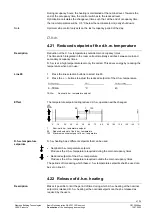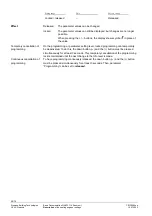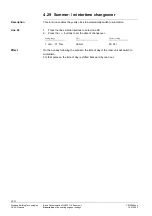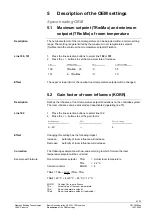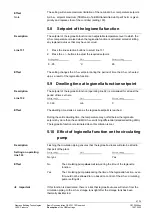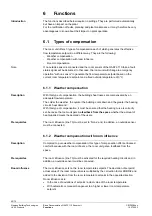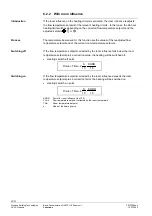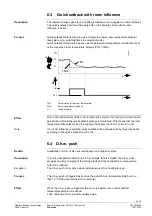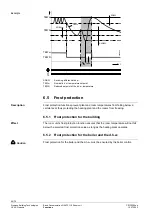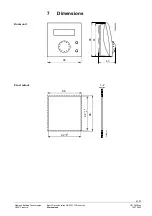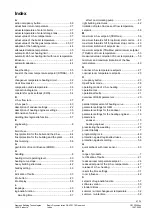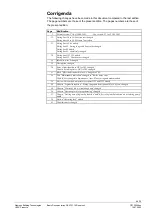
61/70
Siemens Building Technologies
Basic Documentation QAA73.110 Room unit
CE1P2284en
HVAC Products
Functions
10.07.2002
6.1.3 Room
compensation
With pure room compensation, a PID control algorithm is activated. This is the
preferred control mode if the room temperature is the only compensating variable
available. The selected control algorithm gives consideration to both the actual value of
the room temperature and the current slope (gradient). The P-part is generated by the
control deviation, the D-part from the gradient of the room temperature. The I-part
suppresses continuous deviations of setpoint / actual value.
The room influence (line 75) must be activated for the required heating circuits and, in
addition, no outside sensor may be connected.
The flow temperature and thus the room temperature are controlled as a function of the
actual room temperature and its current development. For example, if the room
temperature rises slightly, the flow temperature will immediately be reduced even if
there is deviation of setpoint / actual value apparent yet. To prevent continuous
deviations, the I-part of PID control keeps the room temperature at the required level.
6.2 Automatic 24-hour heating limit
This is a fast-acting savings function since the heating is switched off when there is no
more demand for heat. Economical operation is ensured throughout the year since
manual switching off is no longer required, especially during intermediate seasons.
•
The automatic 24-hour heating limit does not function in continuous operation
•
When the 24-hour heating limit is activated, the Info line displays Eco
6.2.1 Without room influence
If no room influence is activated, the 24-hour heating limit switches depending on the
flow temperature setpoint and the adjusted setpoint
, or
.
The temperature basis used for this function are the flow temperature setpoint and the
current room temperature setpoint.
If the flow temperature setpoint falls below the room temperature setpoint plus a
correction value, the heating will be switched off.
Heating OFF:
TVw
=
TRw +2 S/10
If the flow temperature setpoint exceeds the room temperature setpoint plus a
correction value, the heating will be switched on.
Heating ON:
TVw
=
TRw +4 S/10
TVw
Flow temperature setpoint
TRw
Room temperature setpoint
s
Slope of the heating curve
Description
Prerequisites
Effect
Description
Notes
Introduction
Process
Switching off
Switching on

